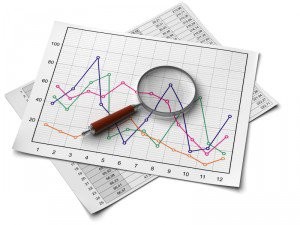Until recently, a U.S. patent owner was barred from obtaining
damages under 35 U.S.C. § 284 for lost sales outside the
United States, even where those lost sales were the direct and
foreseeable result of patent infringement inside the United States.
In Brumfield v. IBG LLC, the CAFC recognized that the
Supreme Court had largely overruled prior precedent on this issue,
and held that recovery of patent damages based upon foreign
activity is possible. While the alleged foreign activity in
Brumfield ultimately did not support damages under the
newly applied WesternGeco two-step framework, the
CAFC’s Brumfield decision now provides a less
restrictive standard for obtaining damages for foreign infringing
activity.
Recovery of damages for patent infringement requires a finding
one or more infringing activities as defined in 35 U.S.C. §
271, and damages for such infringement are defined under 35 U.S.C.
§ 284. In Power Integrations v. Fairchild
Semiconductor1, the United States
Court of Appeals for the Federal Circuit (CAFC) had previously held
that a patent owner is barred from obtaining damages under 35
U.S.C. § 284 for lost sales outside the United States, even
where those lost sales are the direct and foreseeable result of
patent infringement inside the United States. One of the questions
at issue in Brumfield v. IBG
LLC2 is whether activity outside
of the United States can support damages for patent infringement.
To address the question, the CAFC held that Power
Integrations no longer controls the issue, but rather the
question is resolved under the two-step framework set forth by the
United States Supreme Court in WesternGeco LLC v. ION
Geophysical Corporation3.
In Brumfield, the owner of the four patents at issue
had sued IBG for infringement. The district court found two of the
four patents invalid under 35 U.S.C. § 101, and awarded
damages of $6.6 million for infringement of the remaining two
patents. During the litigation the court had excluded proposed
testimony from Brumfield’s damages expert based on
“‘making’ the accused products in the United States
with foreign damages.” The disallowed testimony promoted a
position that a patentee is entitled to damages based on foreign
activity for a product “deliberately market[ed] . . .
worldwide,” and the experts “understand[ing] that [a
patentee] is entitled to worldwide patent damages for harm that is
the foreseeable and but-for result of infringement in the United
States.” Brumfield appealed, among other things, the
court’s exclusion of the testimony.
On appeal, Brumfield argued that the expert testimony was
improperly excluded based upon the more restrictive principles of
Power Integrations, and that the district court should
have instead applied the less restrictive two-step framework of
WesternGeco. The CAFC agreed and held that the Supreme
Court had overruled the relevant holding of Power
Integrations, and that the WesternGeco analysis now
controls. In contrast to the rule in Power Integrations
where a patentee is not entitled to compensatory damages for injury
caused by infringing activity that occurred outside the territory
of the United States, in WesternGeco the Supreme Court
held that an act of exporting components from the United States
that infringes a patent would be considered as a domestic act of
infringement under 35 U.S.C. § 271(f) and lost foreign profits
that resulted from the act of exporting is recoverable under 35
U.S.C. § 284.
The two-step framework of WesternGeco includes:
(1) starting from a presumption that a statute lacks
extraterritorial reach, and determining whether the presumption
against extraterritoriality has been rebutted by the statute;
and
(2) if not rebutted, identifying “the statute’s
focus” to determine whether the statutory application at issue
is an allowed domestic application.
For step one of the framework the CAFC followed the Supreme
Court’s holding that the patent statute does not provide a
clear indication of extraterritorial application sufficient to
rebut the presumption against extraterritorial reach.
The CAFC turned to the second step of the framework where it
found that “the statute’s focus” to “award the
claimant damages adequate to compensate for the infringement”
as found in 35 U.S.C. § 284, and that the “overriding
purpose . . . is to afford patent owners complete compensation for
infringements.”
Having identified the focus of the statute as completely
compensating harmed patentees, the CAFC next concluded that the
framework of WesternGeco applies to any infringement under
35 U.S.C. § 271 and is not limited to just in the infringement
under 35 U.S.C. § 271(f) at issue in WesternGeco. The
expert’s testimony at issue in Brumfield alleged that
the infringement was “making” under Section 271(a) which
was compensable under the focus of the patent statute identified by
the CAFC.
While a domestic “making” of the patented product
could support foreign patent damages, the CAFC determined that
there was not a sufficient causal link between the damages sought
by the patentee and domestic conduct of the alleged infringer. The
CAFC explained, “[u]nder WesternGeco we must examine
the particular acts alleged to constitute infringement under
particular statutory provisions to determine if the allegations
focus on domestic conduct.” The district court had found it
indisputable that “a user located in a different country
downloads the [allegedly infringing product] to her computer
located in that country and uses a mouse and a monitor located in
that country to [use the product]” outside of the United
States. However, the excluded expert testimony was not directed to
the downloading activity, but rather to a foreign user “making
the accused product” when they use the product. After two of
the patents were invalidated, the only claims that remained were
method and computer readable medium (CRM) claims. The CAFC found
that “[t]here is no established recognition in patent law of
direct infringement by ‘making’ a ‘method’.”
As to the CRM claims, the expert testimony did not address making a
CRM, but rather only made a loose connection to foreign use of a
product constituting making the product. The court stated that even
if the mismatch between the proposal and the claims is put aside,
the patentee presented no focused, coherent explanation of the
required causal connection between the damages and the domestic
infringement. Ultimately, because the excluded testimony did not
connect back to a domestic infringement, the CAFC upheld the
district court’s exclusion of the expert’s testimony.
Although Brumfield established that the
WesternGeco framework applies to the analysis of foreign
damages resulting from domestic infringement, the CAFC did not
provide the proper approach to determining when foreign conduct can
properly play a role in calculating damages, noting the unaddressed
issues of the scope of the causation requirement in
WesternGeco: “[o]ne such question is whether the
“reasonable, objective foreseeability” presumptive
standard for lost profits … is applicable where the damages are
for a (non-established) reasonably royalty …. We need not and do
not here suggest answers to, or further explore, those or other
questions.”
In sum, the CAFC established that the WesternGeco
analysis applies to recovering damages based on foreign conduct.
The CAFC further expanded WesternGeco and concluded that
WesternGeco applies to different types of infringements
and damages, but causation must be established that clearly
connects the domestic infringement to the foreign damages. Thus,
while Brumfield may have expanded ways in which a patent
owner could possibly seek damages resulting from foreign conduct,
the lack of a clear standard may mean that the path to getting
foreign damages awarded is still unclear and will be determined in
future cases.
Footnotes
1. 711 F.3d 1348 (Fed. Cir. 2013).
2. 97 F.4th 854 (Fed. Cir. 2024).
3. 138 S. Ct. 2129 (2018).
The content of this article is intended to provide a general
guide to the subject matter. Specialist advice should be sought
about your specific circumstances.
#Patent #Owner #Claim #Foreign #Damages #Resulting #Domestic #Infringement #Patent










